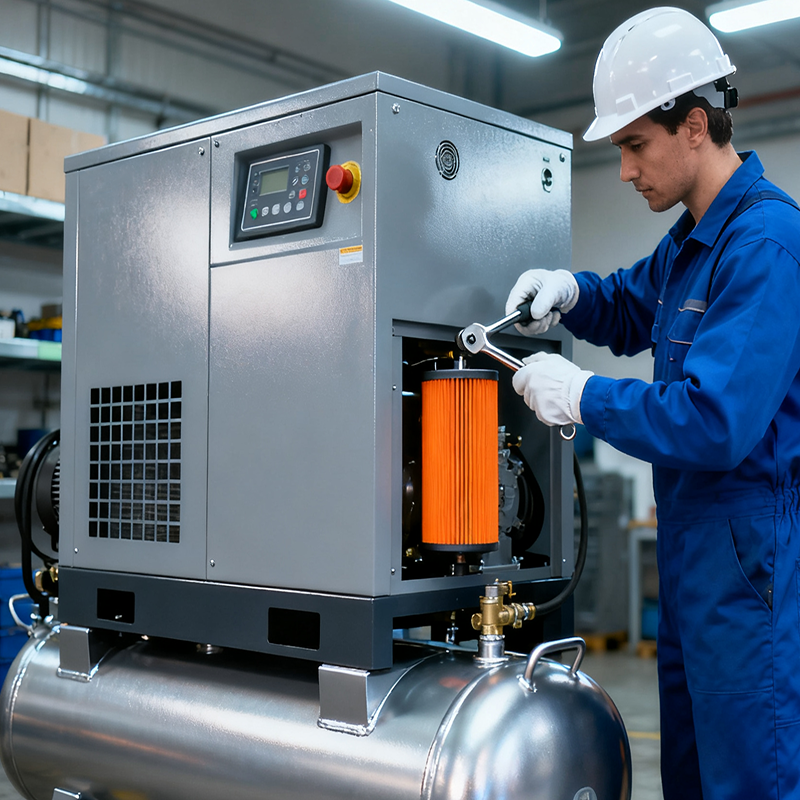The quality of screw air compressor oil plays a decisive role in the performance of oil-injected screw compressors. Premium oils must possess core characteristics such as strong oxidation resistance, rapid oil-gas separation, excellent anti-foaming p...
Contact Us
The quality of screw air compressor oil plays a decisive role in the performance of oil-injected screw compressors. Premium oils must possess core characteristics such as strong oxidation resistance, rapid oil-gas separation, excellent anti-foaming properties, high viscosity compatibility, and effective corrosion protection. Therefore, users must select genuine, dedicated screw compressor oil to ensure stable equipment operation.
I. Oil Change Intervals 1. New units require their first oil change after 500 hours of break-in period. Subsequent changes should be performed every 2000 consecutive operating hours. 2. It is recommended to replace the oil filter simultaneously during oil changes to ensure oil circuit cleanliness. 3. If equipment operates in harsh environments with high dust or humidity, oil change intervals should be appropriately shortened.
II. Oil Change Procedure 1. Run the air compressor for 5 minutes to raise oil temperature above 50°C, reducing viscosity for easier drainage. 2. After shutdown, wait until residual pressure in the oil-gas separator drops to 0.1MPa. Open the drain valve at the bottom and connect it to an oil storage tank. Open the drain valve slowly to prevent high-pressure, high-temperature lubricating oil from splashing and causing injury or environmental contamination. 3. Close the drain valve when oil flows in droplets. Then unscrew the old oil filter element, drain residual oil from all lines, and install a new filter element. 4. Open the filler cap, add new oil to the level indicated by the oil gauge, tighten the cap, and inspect all connections for leaks.
III. Key Points for Daily Maintenance 1. Regularly check the lubricating oil level. If the oil level falls below the mark, promptly replenish with new oil of the same grade. 2. Regularly drain condensate from the oil-gas separator: Under normal conditions, drain once per week; in high-temperature environments, shorten the interval to every 2-3 days. 3. When draining condensate, ensure the machine has been shut down for at least 4 hours and the oil-gas separator is depressurized before opening the drain valve. Close the valve immediately once oil begins flowing to prevent waste.
IV. Usage Restrictions 1. Strictly prohibit mixing lubricants of different brands or grades to prevent degradation and failure. 2. Never exceed the recommended service life of lubricants. Doing so degrades oil quality, reduces lubrication effectiveness, and lowers flash point. This significantly increases the risk of equipment shutdown due to overheating and, in severe cases, may cause spontaneous combustion of the oil, posing serious safety hazards.